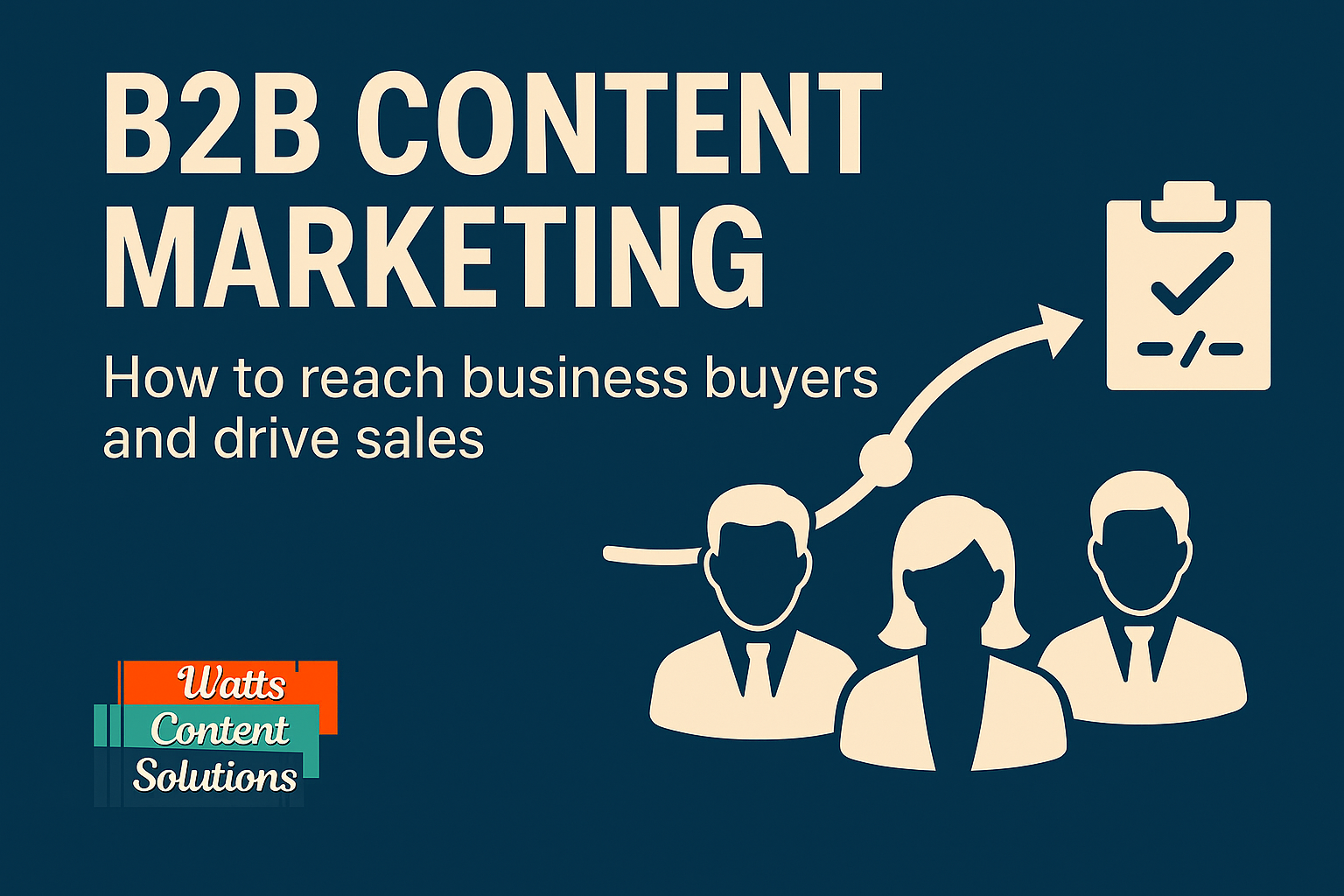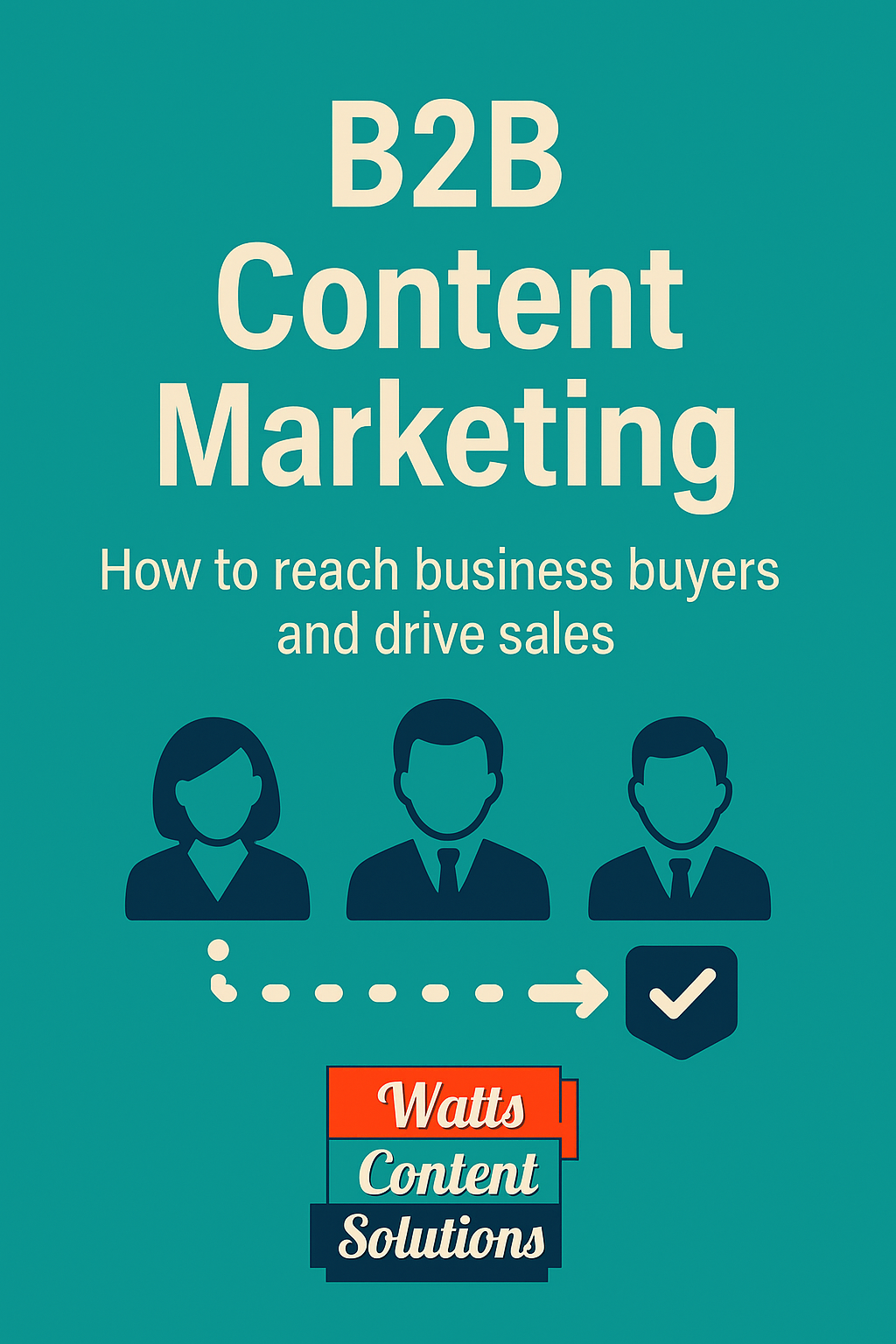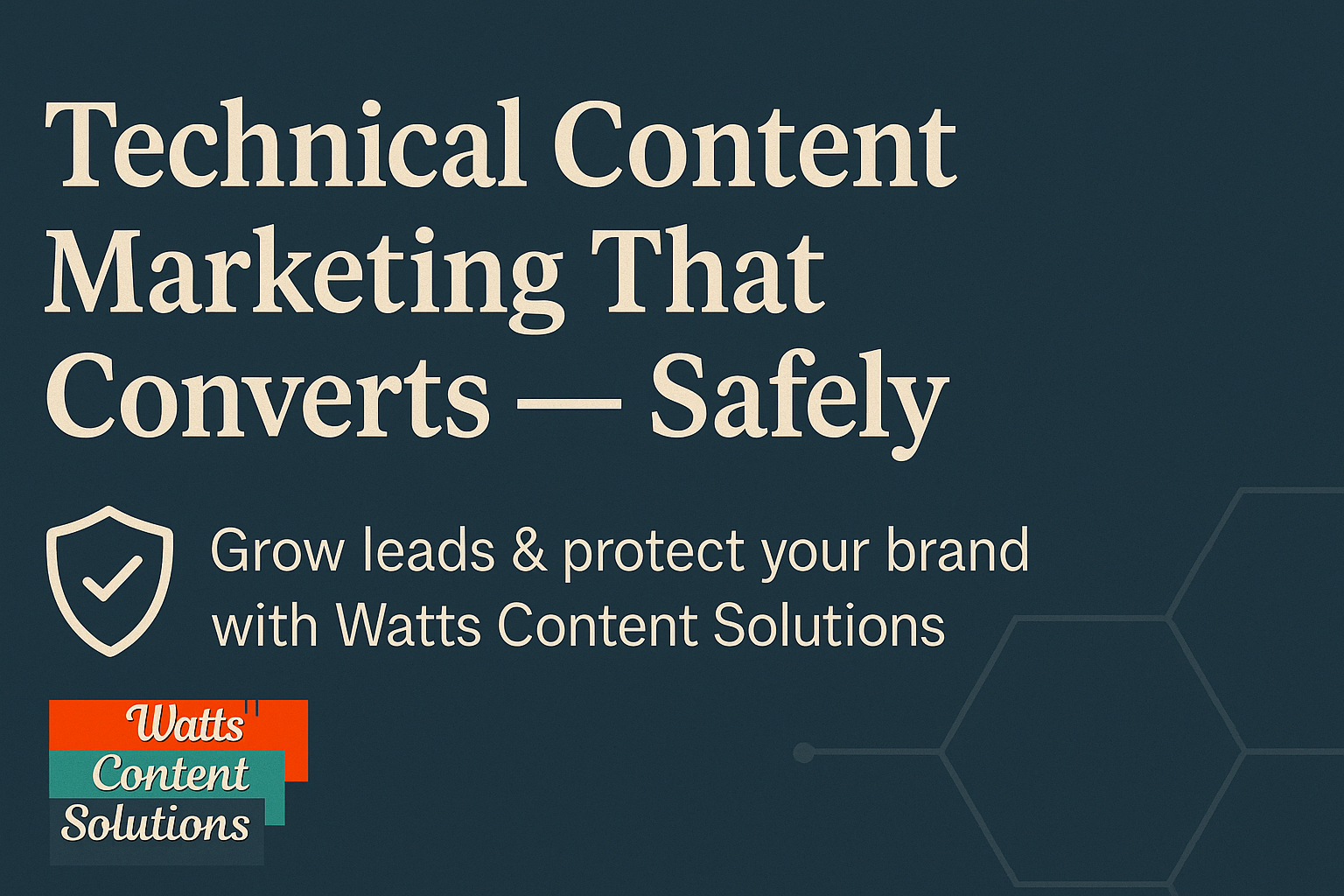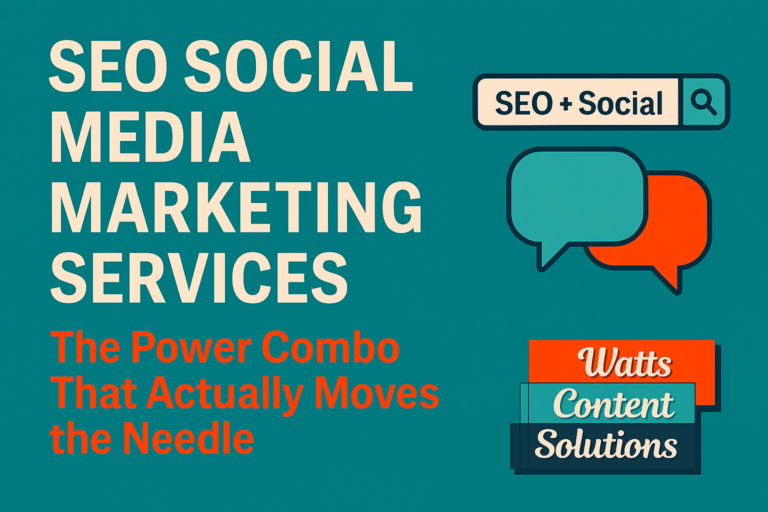B2B Content Marketing: How to Build a Strategy That Actually Converts

If you’ve ever poured time into creating content like blog posts, social videos, even an email list and still can’t connect it to revenue, you’re not alone.
I once had a client that had a great business idea and followed every tip they could find online to build a solid and engaging brand. They made videos. They wrote blog posts. They built an email list. They tried to stay visible on social media. They did everything a marketing “guru” might tell you to do.
But there was one big problem: their customers were other businesses.
They were using business-to-consumer (B2C) tactics for a business-to-business (B2B) audience. And those buyers weren’t responding.
I see this happen all the time.
B2B marketing looks similar on the surface. For example, there’s still social content, blogs, and email, but the strategy behind it has to change if you want to turn interest into deals.
If you’re a small business selling to other businesses, here’s how to stop spinning your wheels and build a content marketing plan that actually drives sales.
Why B2C Tactics Don’t Work for B2B
Consumers and businesses make decisions differently. When you’re selling to individuals, you’re speaking to one person’s desire or impulse. When you’re selling to another company, you’re dealing with a group: decision makers, influencers, budget owners, legal or compliance teams. It’s more complex, slower, and more rational.
That’s where my client went wrong. Their videos and posts were fun and shareable but didn’t answer the real questions a business buyer has: What’s the ROI? How does this integrate into our existing systems? Can it scale? Will my boss think it’s worth the cost?
They were marketing for fast yes’s when their buyers needed research, proof, and consensus.
B2B vs. B2C: Key Differences You Can’t Ignore
Decision-Making Process
- B2B: There are multiple stakeholders, longer sales cycles, and they are risk-averse. Buyers gather data, compare options, and often need internal approval.
- B2C: One decision maker. Shorter, often emotional buying process.
Your content must help multiple people inside one company feel safe saying yes. And thise different people often have different conerns and objections you must overcome before they get to yes.
Content Types That Work
- B2B: The best content to add to your b2b content marekting strategy include case studies, whitepapers, webinars, how-to guides, ROI calculators, and industry research.
- B2C: Lifestyle content, social proof, influencers, and short product demos work best for this type of marekting.
If you’re B2B, spend your energy on resources that show value and credibility. There is a palce for awareness/ thought leadership content in B2B as well, but its only ine small part of the b2b content marketing sales engine.
Channels That Matter
- B2B: The best channels are LinkedIn, SEO-driven blogs, targeted email nurture, and webinars.
- B2C: The focus should be on Instagram, TikTok, Facebook groups, mass email blasts.
Your clients aren’t scrolling TikTok looking for a SaaS tool or compliance service. They’re on LinkedIn, searching Google, or asking peers for recommendations.
Buyer Journey & Nurturing
- B2B: Buyers need awareness, then consideration, then decision content. That means nurturing them throught each step with content that fits into these diffeent levels to ensure you are delivering the right info at the right time.
- B2C: Content for B2C can move from ad to purchase fast with the right impulse trigger. They have a buying journey as well but it is not long as it is for b2b markets.
How to Build a B2B Content Marketing Strategy That Converts
This is the framework I use when I build strategies for small but ambitious B2B companies.
1. Understand Your Audience on a Business Level
Having a deep understanding of your audience is vital. This means you don’t stop at job titles. Map the full buying committee: who influences the decision, who approves budgets, who will use your product or service daily. Interview past customers. Look at reviews and competitor messaging. This is the Voice of Customer (VOC) work that powers great B2B marketing.
Questions to ask:
- What pain are we solving for them professionally?
- What’s at stake if they pick the wrong vendor?
- How will they justify this purchase internally?
2. Map Content to the Buyer Journey
Think of your marketing like a conversation that happens in 3 stages.
- Awareness: In this stage you want to show you understand their pain points. Blog posts that answer “how do I solve X problem,” industry trend content, educational videos work best here.
- Consideration: At this stage, your target audience is trying to learn what they have to gain by working with you. Give them the content to do this smoothly. Things like case studies, webinars, comparisons that highlight your unique value are excellent b2b content marketing examples for this stage.
- Decision: When entering the decision stage, they are so close to closing eith you. Make sure you have hte right content to tip them over the edge. Create ROI calculators, buyer’s guides, demos, and engage with strategy calls. The goal of this content is to get them to a yes.
My previous client’s mistake was living only in awareness. They had fun and informative posts but no content that helped a CFO or VP say yes.
3. Choose the Right Channels
Stop spreading yourself thin. As much as you may want to be everywhere all at once, you could be spinning your wheels posting content in places where your audience may not even live. If you’re B2B, focus on:
- SEO blogging: Capturing search intent for terms your buyers use.
- LinkedIn: Building thought leadership and credibility where professionals network.
- Targeted email nurture: Leading warm contacts through a clear buyer journey.
- Webinars or gated resources: Collecting qualified leads and educating them.
The goal isn’t to be viral. It’s to be visible to the right people.
4. Build Authority and Trust
B2B buyers can’t risk looking bad for choosing you. Use proof for why you are the best choice for their organization.
- Publish customer wins and anonymized case studies. Make sure you highlight the problem they were facing and how you helped them solve it.
- Highlight measurable ROI (saved time, increased leads, reduced costs). This is importnat since the champion (the person who initiated the engagement with your brand and now has to convince others on your team to work with you) are going to have to make a business case to other members of their organization.
- Show your team’s expertise with original insights or research. They need to know that you’ve had a track record of success. And
In my work, proving ROI and sharing real success stories often moves a deal forward faster than any ad spend.
5. Measure and Refine
Pick a few clear Key Performance indicators (KPIs) and stick to them.
- Organic traffic from ideal search terms
- Number of qualified leads
- Lead-to-sale conversion rate
- Content engagement (downloads, webinar signups, time on page)
I’ve helped organizations grow blog production YOY, increase email traffic by 200%+, and double inbound leads because we weren’t just creating — we were tracking and optimizing and creating content strategically and consistently.
Common Mistakes Small B2B Businesses Make
Now that we’ve discussed some things you should be doing as a b2b business, let’s talk about some things you shouldn’t be doing.
- Chasing the wrong metrics. Vanity metrics (likes, views) aren’t bad, but they’re not sales. Don’t use metrics like these to make business decisions.
- Skipping middle-of-funnel content. Great awareness with no nurture is a dead end. Give your audience what they are looking for every step of the way.
- Assuming consumer platforms will convert. Instagram can be great, but not if your buyers don’t use it to shop for solutions like yours. If you are not seeing results on IG, it could be just the wrong platform.
- No clear call to action. Teach buyers what to do next: book a call, download a guide, request a quote.Giving them good information is helpful. but make it clear what your intentions are in your content.
My Approach to B2B Content Marketing
I’ve spent more than a decade building full-funnel marketing strategies that connect content to revenue in b2c and b2b marketing. That includes:
- Turning random blogs and posts into sales engines that increase traffic and leads.
- Building nurture programs and lead scoring systems that help sales teams focus on the best opportunities.
- Using data and voice of customer to refine messaging so it’s relevant and trusted.
It’s not just about creating content. It’s about making content earn its keep.
Want B2B Content Marketing Help For Your Business?
If you know you need a plan but don’t have the time or expertise to build one, this is where I help.
The Content Marketing Strategy Blueprint is my signature service for small B2B teams and business owners. It gives you a complete, actionable marketing plan built around how business buyers really decide.
Inside your Blueprint you’ll get:
- Audience Clarity: clear buyer personas, ICPs, and messaging that resonate with decision makers.
- Channel Focus: stop spreading yourself thin; know exactly where to invest time and energy.
- SEO Roadmap: keyword research and blog topics to pull in the right traffic.
- Content Calendar: what to create and when to publish for consistency and growth.
- Measurement Plan: what to track so you know if it’s working and where to improve.
If you’ve been creating content but not seeing ROI, this is the reset you need.
👉 Check out the Content Marketing Strategy Blueprint and start building a strategy that leads to real revenue.
Final Thoughts
B2B content marketing isn’t harder than B2C, but it is different. If you want sales, you need to speak to the real concerns of business buyers, map content to their buying process, and use channels that help you earn trust, not just attention.
You can figure it out on your own, but it’s faster and more profitable to have a plan. That’s why I built the Content Marketing Strategy Blueprint: to give small teams the same strategic clarity I’ve used to grow traffic, leads, and sales for years.
If you’re ready to stop guessing and start building content that actually converts, learn more about the Blueprint here or schedule a call with me.







